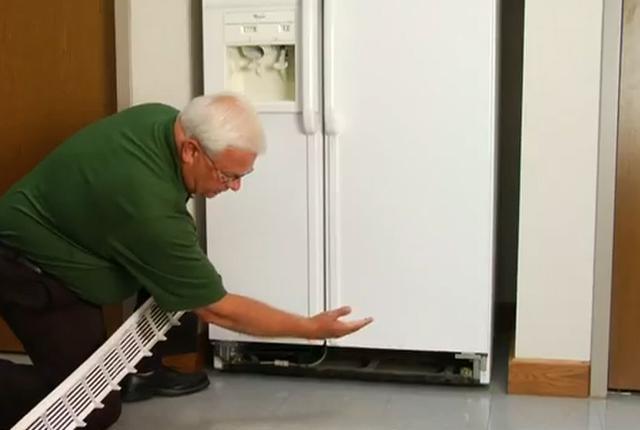While we here at BPI recommend more substantial energy upgrades, like adding insulation or upgrading to efficient heating and cooling systems, sometimes we all need a quick fix to help us feel like we’re taking steps toward achieving a goal. This Quick Fix blog series will focus on things you can do as a homeowner to save money, energy, and resources in your home today.

Many variables can play into the equation of how much energy your refrigerator uses throughout the year: size, age, and type are just a few. If your refrigerator is older, odds are it's using a lot more energy than its newer, more efficient counterparts. The ENERGY STAR program has a Flip Your Fridge Calculator on its website that shows different costs and energy usage, and how much you could save by upgrading.
For example, if you have a standard refrigerator with the freezer on top, made between 1993 and 2000, you could be spending upwards of $125/year and using 1,031 kWh of energy. By upgrading your refrigerator, ENERGY STAR estimates that you could save nearly $350 over five years and prevent 995lbs of carbon pollution.
Perhaps you don't have the budget to upgrade your refrigerator right now. There are other smaller steps you can take to limit the energy usage, and thus lower your energy bills, starting today.
1. Clean your condenser coils
The coils in your refrigerator are the main way that your refrigerator removes heat from the unit. If the coils in the back or the underside of your fridge get dusty or dirty, they will have to work extra hard to remove heat, resulting in increased energy consumption. It's an easy fix: use a bristle brush to clean out some of the dust. This doesn't need to be done often, only occasionally, to prevent buildup.
2. Keep your fridge away from high heat sources
Along the same lines of dirty coils preventing heat removal, placing your fridge near other high sources of heat can kick its compressor into high gear. Try to arrange your kitchen so your refrigerator isn't near your stove, oven, or dishwasher. It also helps to keep your fridge out of extended periods of direct sunlight.
3. Check the temperature
Cranking up the temperature on either your refrigerator or freezer will result in increased energy usage. According to the Department of Energy, the most energy efficient temperature to keep your fridge at is between 35-38◦F and 0◦F for a separate freezer. If your fridge doesn't have specific temperature settings (e.g. it only has low, medium, and high settings), setting it to the midpoint temperature should be effective.
4. Reorganize
I'm definitely guilty of having a disorganized refrigerator, but reorganizing food items could limit the amount of time you keep the door open, thus preventing energy waste. The first step is to group all like items together, like placing all popularly used condiments in the top shelf of the fridge door, so you can quickly find it when you need it. You can extend the life of fruits and vegetables by placing them in the crisper drawers (open lever allows moisture to escape for apples, peppers, and avocadoes, while a closed lever keeps moisture in for lettuce, strawberries, and spinach). It's also important to keep food safety in mind while reorganizing your fridge.
Long term solutions
When you're ready to take the plunge and “flip your fridge,” or trade it in for a more energy efficient model, check out these discounts and rebates on ENERGY STAR certified refrigerators. The Department of Energy states that top freezer models are more energy efficient than side-by-side models, and features like icemakers and water dispensers also use more energy than their counterparts.

Follow us